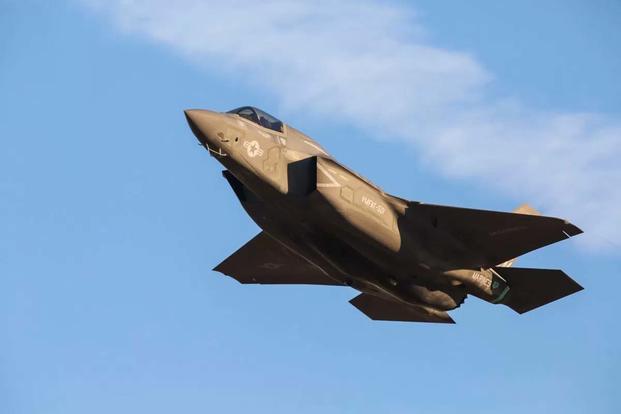South Korea's navy is looking to buy stealthy F-35B aircraft, the Marine Corps jump-jet variant of the Joint Strike Fighter, for its new Dokdo-class amphibious assault ships.
Citing military sources, South Korea's Yonhap news agency said the Lockheed Martin Corp.-made short takeoff and vertical landing (STOVL) F-35Bs would be part of South Korea's long-term plan to build a "blue water" navy.
South Korea currently has one amphibious assault ship, the 14,300-ton, 653-foot Dokdo, which is the largest ship in the South Korean navy. A second Dokdo-class amphib is planned for 2020.
"I understand that the military top brass have recently discussed whether they can introduce a small number of F-35B fighters and operate them aboard the new ship that has already been deployed and one to be additionally built," a military source told Yonhap.
Japan is also considering buying F-35Bs to operate from its helicopter carrier, the Japan Times reported.
The problem for South Korea and Japan will be in redesigning the decks of the amphibs to take the heat and stress of the F-35B vertical landings. The Dokdo class ships now are configured to support 10 helicopters.
"Considerations will continue about whether we can run F-35Bs by redesigning the decks of the Dokdo and the new ship that is being constructed," a second military source told Yonhap.
In 2014, South Korea agreed to buy 40 conventional landing and takeoff F-35A fighters, the Air Force variant of the Joint Strike Fighter, for deployment from 2018 through 2021 at a cost of $6.75 billion. The F-35B is the Marine Corps' variant and the F-35C is the Navy's.
Earlier this month, U.S. Air Force F-35As stationed at Kadena Air Base on Okinawa flew over South Korea in a demonstration of fifth-generation air power as part of the Vigilant Ace joint exercises.
At upwards of $400 billion, the F-35 is the most expensive weapons system in history. Last week, new Deputy Defense Secretary Patrick Shanahan, a former Boeing Co. executive, said that reining in costs and making more F-35s operational will be a the top of his agenda for 2018.
"Availability is not where it should be" on the program, Shanahan told Pentagon reporters. "The task we have is to climb that hill," he said, "but I can't say we have a complete understanding of that yet."
"How do we really leverage up on the performance there [at Lockheed]? They've gone now from a development status to full-rate production," Shanahan said. "Since we've got this steady state of full-rate production, how do you make that, you know, run like a sewing machine?"
Shanahan was immediately challenged by reporters on his claim that Lockheed was at full-rate production of the F-35. There were also questions on F-35 availability for lack of spare parts.
In 2017, Lockheed delivered 66 F-35s, according to the Pentagon. Lockheed was expected to deliver 95 F-35s in 2018 but the initial full-production rate of 160 F-35s per year was not expected to be reached until 2023.
Shanahan gave an indirect response to the question on full-rate production. "Part of the short answer to that is that we have a plan we're working with them [at Lockheed]," he said. He also said it was important to achieve a "mindset" on full-rate production before it was actually achieved.
"We should be thinking about the mindset and behaviors and how we are leveraging productivity of a full-rate environment," Shanahan said.
-- Richard Sisk can be reached at Richard.Sisk@Military.com.










